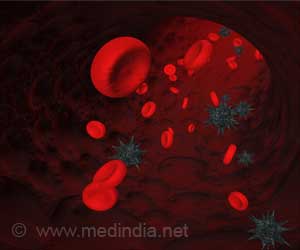Genomic profiles of acute myeloid leukemia can be used to classify patients by risk of relapse after stem cell transplant, said study.

‘A bone marrow stem cell transplant is curative in some older patients with AML, but toxicities and risk of relapse can be high.’





The risk classification system stands to have an impact on how this group of patients is treated, according to the researchers. Patients at low genetic risk may be candidates for treatments that produce less toxicity. Patients at high risk might find it advantageous to join clinical trials of new approaches that can reduce the chance of relapse. "A bone marrow stem cell transplant is curative in some older patients with AML, but toxicities and risk of relapse can be high," said study first author H. Moses Murdock, a Research Fellow at Dana-Farber and student at the Perelman School of Medicine at the University of Pennsylvania. Murdock is a student in the lab of R. Coleman Lindsley, MD, PhD, physician in the Adult Leukemia Program at Dana-Farber and senior author of the study. "We wanted to explore whether genetics could be used to identify patients who are likely to do well with existing approaches and those who may benefit from alternative transplant strategies."
In the study, researchers sequenced 112 genes in diagnostic AML samples from 300 patients age 60 or older who had undergone an allogeneic stem cell transplant at six U.S. transplant centers. All the transplants took place after patients had achieved their first remission with chemotherapy treatment.
The researchers then examined whether mutations - or lack of mutations - in any of these genes correlated with how patients fared after the transplant. They found that patients with a mutation in either TP53 or JAK2, or the presence of a FLT3-ITD (internal tandem duplication without an accompanying mutation in NPM1) had the highest risk of death or relapse. Patients without mutations in these genes but mutations in either DNMT3A or DDX41, or NPM1 (without an accompanying FLT3-ITD) were at low risk of relapse. Patients without high or low risk mutations were categorized as being at intermediate risk. After adjusting for clinical variables, only 5% percent of patients in the highest risk group were alive and free of leukemia after 3 years, compared to 70% of those in the lowest-risk group.
Of the patients studied, about 25% qualified as low risk, while about 16% were in the highest risk group.
Advertisement
Source-Eurekalert














